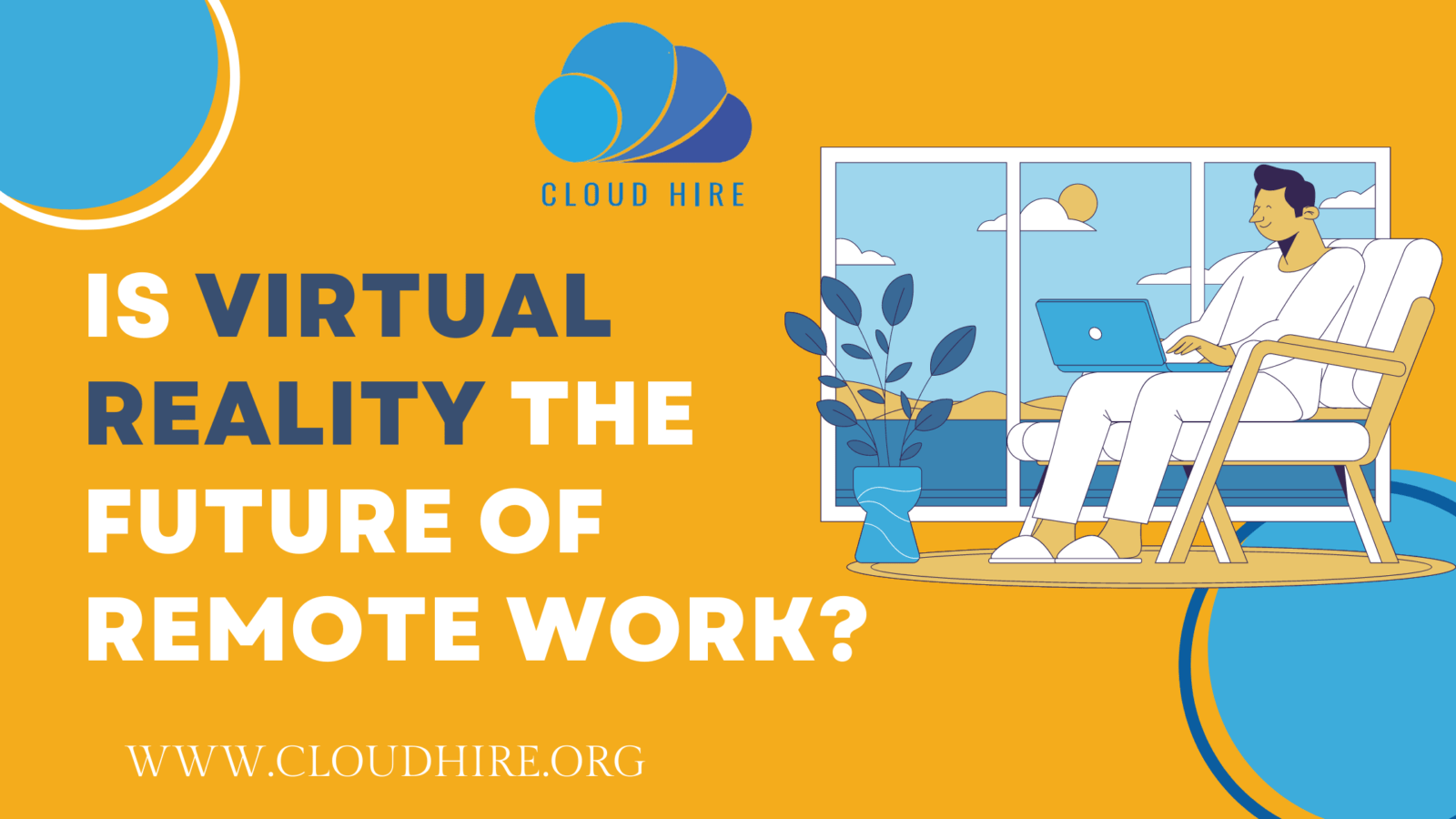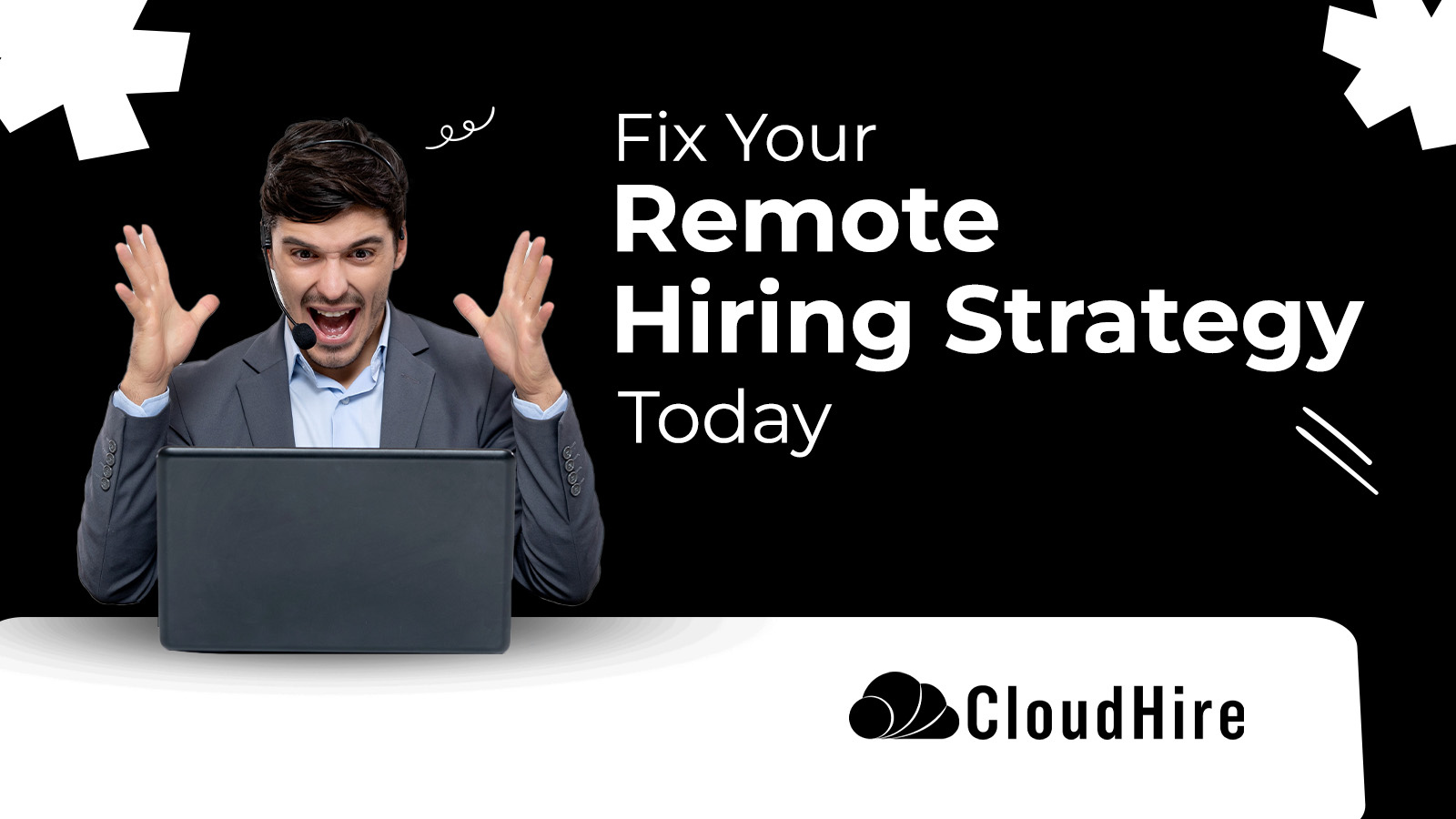Virtual reality is not just the hottest thing in the gaming industry. It changes the landscape of remote work. Virtual Reality and Remote Work seem to go perfectly together. This blog shows you how VR can help you earn more money, work comfortably, and allows you to be whoever you want to be.
What is Virtual Reality?
Virtual reality’s potential is hard to overstate — it can change how we shop, how we learn, how we communicate. But what is virtual reality?
In short, virtual reality (VR) is a computer-generated environment that lets you experience a different reality. A VR headset fits around your head and over your eyes and visually separates you from whatever space you’re physically occupying. Using VR headsets, accessories such as hand trackers, and other devices, you can explore an environment and interact with objects in a way that feels real.
What’s the difference between virtual reality and augmented reality?
Virtual reality replaces real vision with a digital interface. Augmented reality (AR) overlays digital information on the real world through your mobile device or smart glasses. With ARKit 2, Apple will give developers the tools to create more immersive augmented reality experiences on iPhones and iPads.
How is VR Used in Remote Work?
The year 2020 will, in many ways, forever be remembered as the year that changed everything.
When Covid-19 spread across the globe and forced businesses to shut down their offices, millions of people had to figure out how to move their jobs online.
At the same time, a new piece of technology that was previously considered a novelty started gaining traction in the workplace. Virtual reality (VR) is no longer just something you use for gaming — it has become a powerful tool that can help remote workers stay connected while they work from home.
Virtual reality (VR) is the technology that recreates an immersive environment or experience with the help of a computer or smartphone. The user can enter this environment with the use of a VR headset. There are two types of VR: tethered and mobile. Tethered VR requires a computer to power the headset, while mobile VR uses your smartphone.
There are several ways that you can use a VR headset and its associated software for remote work:
- 3D modeling and animation
- Remote collaboration
- Virtual meetings
- Training and education
How Could Remote Workers Benefit from Virtual Reality?
A new study by Robert Half Technology shows that long-standing perceptions of remote workers are changing. The survey, which polled more than 2,500 U.S. chief information officers (CIOs), indicates that many employers now view remote workers as equally productive as their office-based employees.
“Remote work is increasingly common in the technology industry, and our research suggests it’s becoming a popular option for professionals in other fields as well,” said John Reed, senior executive director of Robert Half Technology. “As mobile devices and collaboration tools have evolved, so too has the virtual workplace, allowing professionals to conduct business from almost anywhere. Companies that offer remote work options are also able to attract more top talent and reduce employee turnover as they can expand their recruiting pool beyond the local area.”
The virtual reality (VR) industry has been around for decades, but its potential has only recently been tapped. In the next few years, VR is expected to be a multi-billion-dollar industry.
Some of the most promising uses of VR include creating immersive, realistic experiences for remote workers. Employees can use VR to train for their jobs and to better understand their customers and company culture.
Is VR the Future of Remote Work?
Using virtual reality in the workplace is becoming increasingly popular.
A recent survey of 1,000 companies conducted by Greenlight Insights and VR Intelligence found that 46 percent of businesses expect to use virtual reality in their marketing programs in the year ahead.
Several industries have already embraced VR, including media, healthcare, training, and education. But many others are considering whether they should invest in the technology.
So how can your business use VR? One option is to implement virtual meetings.
Virtual Reality technology is evolving rapidly and will likely be an essential part of the future of work:
In the future, you may be able to work from home and have a personal office. But when your boss wants to talk, she won’t email or call.
She’ll just walk right into your virtual office.
Since its inception, the idea of virtual reality has been driven by the need for human connection without physical proximity.
Virtual reality technology has evolved beyond video games, and enterprises are starting to embrace it as a tool for employees to communicate with each other remotely. It’s especially useful to new hires who haven’t met their colleagues in person yet.
“It’s an easy way to feel like they’re part of the team,” said Andrew Leto, CEO of Kaon Interactive.
This is speculation till we truly get to see how it all develops, but even the current status is exciting! Virtual reality opens up new possibilities for how we engage with others, as well as new possibilities for remote work. Even though this technology is relatively young, we’re already starting to see some very real benefits coming out of it.
Virtual reality has the power to revolutionize remote work. The technology, which creates a simulated environment by stimulating senses, enables users to experience real-life settings virtually and interact with other people located in remote locations—or not at all. The way we work and connect with colleagues is changing drastically, because of VR devices.
>>The Impact Of The Remote Workforce On Business And Company Culture








